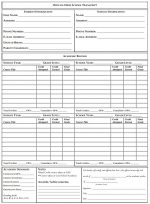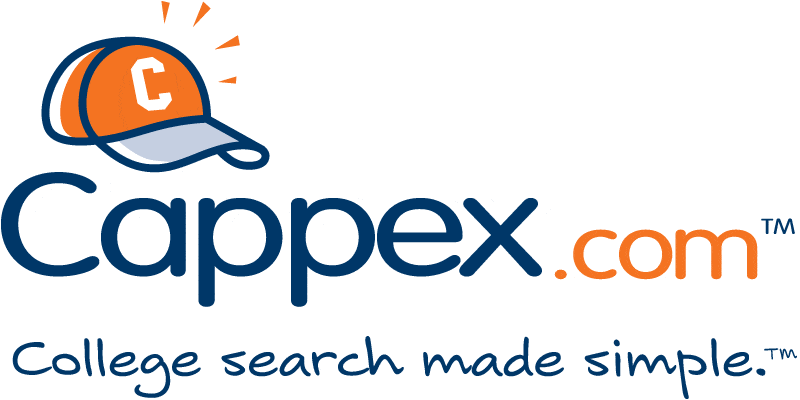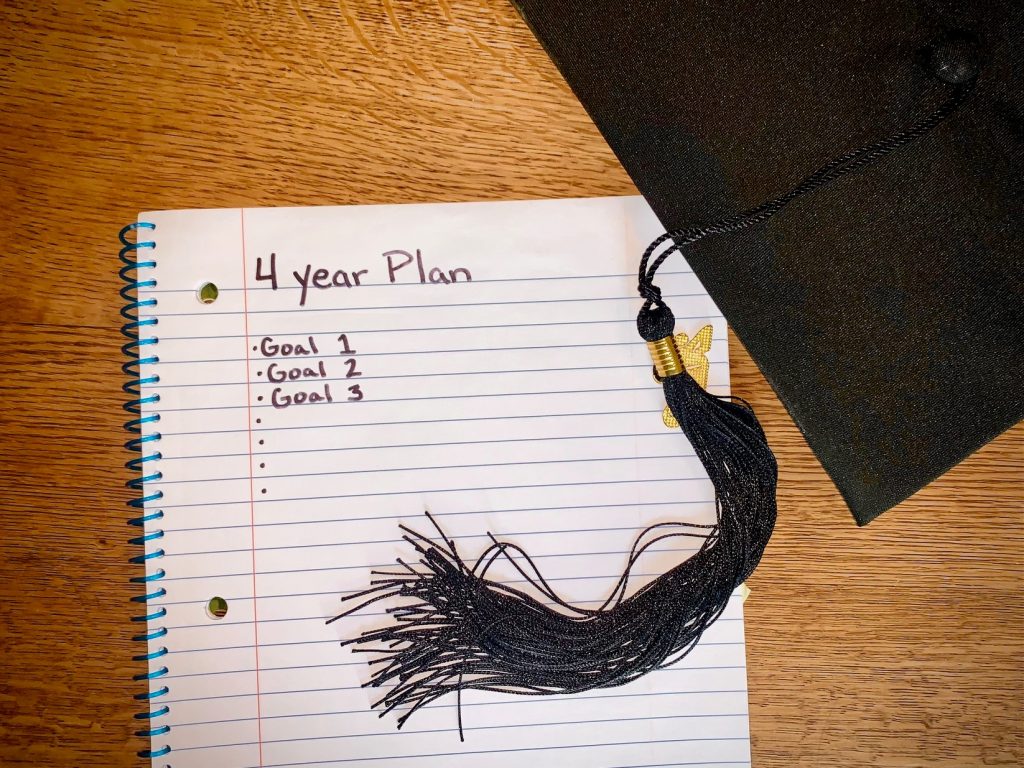027. Advanced Courses and Testing

027.
Advanced Courses and Testing
Should your student take Advanced Courses and Testing?
Pros & Cons of Dual Credit, CLEP, AP, Honors, DSST and ACE.
Tune in this week while we discuss these topics and more!

Click PLAY Button Below or Subscribe and listen on your favorite podcast platform
Scroll Down for 2 Freebies this week:
CLEP Guide (pdf)
TWO Editable Transcript Templates (doc and xls)
Brand New to Homeschooling?
GETTING START PAGE >>
Kindergarten Page >>
High School Series >>
Show Notes
Welcome to Episode 04. in our High School Series
Understanding the nuances of advanced coursework can be confusing to homeschool parents. The truth is that the advanced courses you choose for your child can either save your family money, time, and stress or set up your child for frustration down the road.
Whether or not your student is college bound, Dual Credit/Dual Enrollment, AP (Advanced Placement), and DSST/ CLEP (Credit by Exam) are three of the routes you may choose to take to maximize your high schooler’s experience. If they are college bound, these are great ways to legitimize a homeschool transcript and get ahead in college. If they are not college bound, these are still great ways to save time and energy while completing core coursework to meet your high school graduation requirements.

In our previous HIGH SCHOOL SERIES episodes, we’ve talked about making a 4 year plan, choosing core subjects and electives, and how to create high school documentation for your records and for college admissions. If you haven’t listened, we have all of our high school info organized together on its own tab on our website and it is sure to be helpful.
Dual Credit/Dual Enrollment (3:18)
The very basic definition of “Dual credit” is that your child is awarded both high school and college credit for the same course. You will sometimes see the terms dual/concurrent enrollment and dual credit used interchangeably. Some people or institutions define dual enrollment as a high school student enrolled in a college-level class, but the coursework does not meet any high school graduation requirement. Only college credit is earned. These same institutions may use the term dual credit to designate a student fulfilling high school credit along with college credit. For homeschool students, the parent is typically the one actually assigning credit so the difference in designation doesn’t really matter.
There are even more words, some state specific, that we encountered while researching this episode. In our case, we both had students who did dual credit through our local community college, and they called it dual credit, so that’s the term we use.
College Planning Using Dual Enrollment by Kathe Lee is a valuable resource for any homeschooling parent looking to use Dual Enrollment to help their student stand-out, get done, or get money for college:

So nowadays, there are tons of options for dual credit classes: in person or online through your local community college, through other colleges online, and through various online dual credit programs. We usually suggest starting with your local community college. Many states have opportunities for dual credit that are low cost, discounted or free. We happen to live in a county that offers it for free in county and discounted out of county. Either way, it’s a significant discount to regular university classes.
In-person community college classes are a great option for students who thrive or would like to experience a classroom setting. While taking classes on a community college campus, they also have access to resources like counselors, libraries, academic databases, study resources, and labs. My son’s very first dual credit class was a communications/ news photography course and as an amateur photographer already, he was totally blown away by the equipment “rental” and the photo lab- giant printers, studio backdrops.
Dual credit students also typically have access to clubs and other extracurricular programs that are also offered to enrolled students. My kids also really enjoyed the vibe of a community college campus- they liked all the different study nook seating and areas. They often liked to do work there even when they weren’t attending classes.
There may be restrictions or rules about these types of programs. You’ll need to ensure your student meets the minimum requirements for dual enrollment in your state. In ours, there is not a minimum age, but you do have to confirm your child is in high school level. Here, they also have to pass a placement test (the TSI or have a certain ACT/SAT score to waive). You may also be limited to the classes or the number of hours that your student can take. Our program has a pretty broad scope, as long as we have those classes listed, and they can take classes outside the dual credit catalog classes, but they usually cost the regular course price.
Transferring credit to a 4-year university can possibly get complicated. So if that is your ultimate goal for pursuing dual credit, you may want to check before your student takes any classes through a dual credit program to ensure they’re earning credits that will count toward their desired major at their future university. Websites like www.transferology can help with this. You upload your college and coursework taken and then your desired college and it lets you know what percentage may transfer. And of course, the desired college admissions department is going to be your go-to source for this info. Some colleges may take core work but require specific courses for your major to be done at their institution.
For our family, we strictly used dual credit as a way to satisfy high school requirements for a very good price. We figured if beyond high school any credits transferred, that would be a bonus. We were fortunate that all credits did. And that’s important- make sure with any of the things we talk about today that you are assigning high school credit first! You don’t want to end up going nuts on credit coursework, only to find out you forgot some basic high school graduation requirements.
Pros of dual credit:
- Variety of classes: In person classes are great for students who thrive in the classroom setting, online courses are great for students who may like to do self-paced work at home. Some have online time, plus in person labs.
- Access to college resources- some of the things we mentioned above like counselors, libraries, academic databases, study resources, and labs, clubs, and extracurriculars.
- Great way to knock out gen ed or core classes. My non-mathy kids loved tackling all their college math at home, while it was still fresh and so that they never had to do it at university.
- It’s a 2 for one deal! You knock out high school and college work at the same time.
- It’s a time saver. A one-semester college course (or an exam) is equal to a one-year high school course. It’s a great way to stack several semesters worth of work into a smaller time period. We also enjoyed short semester classes.
- Your student is able to demonstrate college readiness. They are able to build an academic track record, proving that they are capable of college-level work, and it legitimizes your transcript.
- Your student can spread college credits out over additional years, lightening their course load later.
- Students learn valuable skills such as managing time, planning a schedule, prioritizing deadlines, etc.
- They learn how to communicate with professors. I can’t tell you how many freshmen my kids have met at college who simply don’t have this skill. I encouraged my kids to go to open hours and study classes that were offered and they were often the only ones. But we had no shortage of reference letters and other opportunities provided because they learned this skill.
- Continue Interest-led Learning- dual credit is a great way to experience classes that maybe you aren’t comfortable teaching at home.
- Explore potential careers- they are able to take a variety of classes that may help in deciding a major or career path later, without feeling locked into a major right away.
- Dual Credit from regionally accredited institutions has the highest level of transferability and acceptance. These credits result in a letter grade on a college transcript.
- Gain independence and confidence. If you have always been their only teacher or they have not had many, being in charge of their own classes and coursework can be a great way for them to see that they really did have the skills and abilities you always told them they did. It always sounds better from someone other than mom!
Cons of dual credit:
- Potentially difficult to transfer credits. As we mentioned above, some colleges prefer credits to come from their school, or they may have a limit on the number of credits allowed. Sometimes they don’t know how to apply them and may put them all as electives- this happened to a friend whose child ended up taking all higher-level coursework that was pretty intense and not having the break of an elective. We tried to combat this by taking only core classes.
- Cost: $0 – $400 per class, depending on your state (not including books). If you don’t have access to free programming, dual credit prices range quite a bit.
- Interaction with classmates- community college is made up of a variety of people of all ages. Your child may be sitting in a class full of adults. They may work on group projects with adults.
- Loss of flexibility- gone are the days of taking nice weather days off. You will have more of a traditional schedule with dual credit coursework.
- Readiness- you will want to make sure your student is indeed ready for the course load and content.
- Introduction to mature topics- the instructors typically don’t know and don’t care that your student is a child. So if you subscribe to a particular worldview or wish your child not to be exposed to certain content, you may want to wait on college coursework or choose a school that aligns with your belief system.
- Permanent record- college grades are permanent and forever impact your GPA. Sometimes you can retake a class and sub out the grade, but some schools also have limits on how many times you can do this. If you aren’t fully sure your child is ready, ASU Universal Learner program is a great option. https://ea.asu.edu There is a $25 enrollment fee per course and an additional $400 if you pass the course and decide you want the credit on your transcript.
- Student is in charge of communication- we had this in both categories but outside of financial and advising situations (in which you have signed a FERPA), your student is the point of contact with the school and the professor. That means they get the emails and they are the ones who ask questions or let the teacher know they will be late. This can sometimes be hard to watch from the sidelines, especially if the student is struggling.
How to determine readiness for dual-credit classes…
Skills your student will benefit from having before they begin a dual credit course:
Note-Taking
Your students should have a general understanding of basic note taking. They may need a notepad or laptop or upgraded system for this.
Time Management
Students need to be able to map out daily tasks in order to accomplish all of their high school and college work. This is great that you will be able to help guide them. You should encourage them to find a system that works for them.
Understands Deadlines
A dual enrolled student should understand the consequences and care enough to get the work done on time. They need to know not to wait until the last minute to start long projects and to procure the supplies or materials they need to complete things well before the due date.
Writing and Research
Basic essay writing skills are necessary for many dual credit courses. Knowing how to conduct basic academic research will also be a benefit. We did find that community college composition classes did teach a lot of this information.
Open to Instruction
Students need to be able to take instruction from others and work well with a group.
AP – Advanced Placement Classes and Exams (22:35)
When we discussed transcripts and weighing your GPA, we mentioned that many people give a full point extra to both dual credit and AP coursework. So, what is an AP Course? Advanced Placement classes are college-level courses which expose high school students to the rigor of college work. Traditionally, APs were used to accumulate college credit which lessened the cost and the time spent on lower-level college courses. While this may still be true, some selective institutions are pickier about accepting these for credit. These days, most students are taking AP classes and exams so that they can be competitive with other applicants. Some traditional school students are taking anywhere from 5–10 APs in high school. AP classes and tests are heavily promoted and offered in public schools.
But homeschooled students may also take the AP courses, and the later AP exams, after completing appropriate academic courses. Most homeschool students probably take AP classes online.
AP Class
The cost of AP classes varies dramatically—you might be able to get free AP classes through your state or other sources, or you might need to pay a tuition of $100 – $250, either per class or per month. These classes are rigorous and time intensive. They may require a minimum of 5-10 hours per week for an entire school year and are meant to prepare students for the AP exam.
AP Exam
An AP exam is usually taken following the completion of an AP course and the test was created as a way for competitive students to get a head start on college courses. The exams are offered by the College Board, the makers of the SAT and CSS Profile.
AP Exams are offered only once a year in May and there are currently 38 exams in a variety of subjects from which you can choose. The cost of the exam is $97
Students don’t technically have to complete an AP course in order to take an AP exam. The students are graded on mastery of the subject on a scale of 1 to 5. AP works by counting the class toward a high school transcript and the results of the exam toward potential college credit. Like Dual credit, AP classes and tests lend legitimacy to your transcript and prove that your child is capable of higher-level work. A high score on an AP exam may earn credit for specific college courses.
Typically, a score of 3 or higher is considered “passing” and recommendation for college credit. But universities can be especially picky when it comes to awarding credit for AP exams. So, like we talked about with dual credit, it’s important to know whether or not your student will actually earn viable, transferable college credit before taking any AP tests and courses, and you may want to consider that before making any significant time or money commitments.
Pros of AP classes/exams:
- Good for students who need a lot of test-prep.
- It can be a chance to study more for a favorite subject.
- Students can be awarded weighted high school credit for AP classes.
- Students may earn college credit for AP exam scores.
- Students can take an AP test without an AP class (but it’s not recommended).
- Challenges your student academically.
- Backs up homeschool grades, lends legitimacy to your transcript.
- Help make your student competitive with other applicants and comparable to other students on a national, standardized level.
- Prepare for college-level work and taking difficult tests.
- Increase chances at merit aid.
- If offered credit, it eliminates the need of taking lower level classes at college
- Money saver if credits are offered.
- Approximately 85% of colleges accept AP Exam for credit
Cons to AP classes/exams:
- Whether or not a student is awarded credit depends on their desired school and their grade system.
- Time- AP Classes are time-intensive and rigorous.
- Cost and availability of classes. It can be hard to find AP courses and they may be expensive.
- A single exam score determines your credit potential.
- Tests can also be hard to find. Parents and students cannot order AP Exams directly. Students who are homeschooled, independent study, attend virtual schools, or schools that don’t administer AP Exams will need to find a school where they can test. The AP Program encourages AP coordinators to help these students. You can look through the AP Course Ledger for schools that offer the test and then you also have to find out if they allow homeschoolers to test and to order tests before November 15th. https://apcourseaudit.inflexion.org/ledger/
- If AP scores are more than four years old, they have been archived and no longer viewable online. You will need to request scores to be sent to schools via mail or fax.
How to take an AP course:
There used to only be one online provider for APs. Now, there are many more options.
AP Course Providers:
John Hopkins Center for Talented Youth CTY
And remember, you can take an approved class without taking the exam. Some students may want to be challenged academically, but not necessarily want the stress of taking the test. AP coursework allows more independence in their studies and can offer a variety of learning experiences and formats. There are so many options for classes that utilize a variety of resources when teaching their students including lectures, discussions, visual aids, and virtual PowerPoints.
Likewise, you can self-study for the exam without taking an official class. There are a ton of resources that can support your homeschooler while studying for the test, from books to online programs. Resources like Coursera, EdX, Khan Academy, and practice tests through the College Board are free and accessible to all. You can also look at the guidelines or syllabus for a class online to understand what to study for. There are AP tutors and teachers out there that also offer classes or just free content for studying.
Resources free and accessible to all:
Lastly, you as the homeschool parent have the same opportunity to create your own AP course and get it approved by the college board. Check out College Board’s page for the AP Course Audit process. If you are all about re-creating the wheel or if you just really enjoy cultivating your own curricula experience, go crazy!
Honors Courses
This is the advanced course designation that is often referenced by homeschooling parents. Unfortunately, it’s also the most subjective.
An Honors level homeschool high school course should be similar in rigor to an AP course. However, the title
“AP” can ONLY be used by courses specifically approved by the College Board.
Honors level courses should be highly rigorous and require a lot of work. This may be worth it for teens who are applying to competitive private or state colleges.
Traditionally, honors courses show it was more advanced work with in-depth thinking.
some things to know about honors courses:
- Not equivalent to college-level work.
- Good option for highly motivated or independent students.
- No required standards to meet.
It is expected that Honors courses have more hours than traditional courses and would typically receive a half credit additional on a weighted transcript.
CLEP and DSST (31:32)
CLEP and DSST are both “credit by exam” programs.
The DSST Credit-by-Exam Program (formerly known as DANTES Subject Standardized Tests) is for civilians and military personnel seeking college credit based on knowledge acquired outside of traditional classroom settings, such as from work, military experience and/or personal studies.
DSST- More Info
DSST exams are multiple-choice, pass/fail tests that mostly cover general education topics. But they also have more technical or work topics like Human Resources, Cybersecurity, Management Information Service, etc. Over 1500 Colleges and universities recognize DSST program and may offer credit. There are over 30 exams and tests can be taken at a variety of test centers.
CLEP stands for College-Level Examination Program. It is a group of tests offered by the College Board and the purpose of the exams is to help people earn college credit for topics that they already know. Therefore, students can earn college credit by passing a CLEP test.
CLEP tests are multiple-choice questions given online at one of 2000 testing centers. CLEP test centers can be located at colleges and universities, independent testing organizations, military bases, and high schools. You can also take CLEP tests online with a digital proctor. The tests take about 90 minutes- 2 hours to complete, and scores are usually available immediately. CLEP offers 34 exams that cover introductory level college course material. With a passing score (over 50) on one CLEP exam, you could earn three or more college credits at 2,900 U.S. colleges and universities.
The main difference between CLEP, DSST and AP Exams is that there is no official preparatory class. Students learn the material covered in the exam on their own.
CLEP RESOURCES
CLEP Official Examination Guide:

Get your FREE 16-page guide before taking any CLEP exam (pdf)
Official CLEP Study App (practice questions + study guide)
REA Guides are specifically aligned to CLEP (comes with online access code):

CLEP exams are offered in four topic areas: History and Social Sciences, Composition and Literature, Science and Mathematics, World Languages
We won’t read off every course here, but we will include the list in the show notes:
History and Social Sciences
History
- American Government
- History of the US 1 and 2
- Macroeconomics
- Microeconomics
- Western Civilization 1 and 2
Social Sciences
- Social Sciences and History
- Human Growth and Development
- Introduction to Educational Psychology
- Introductory Psychology
- Sociology- Introductory
Composition and Literature
- American Literature
- Analyzing and Interpreting Literature
- College Composition
- English Literature
- Humanities
Science and Mathematics
Science
- Biology
- Chemistry
- Natural Sciences
Math
- Calculus
- College Algebra
- College Mathematics
- Precalculus
Business
- Financial Accounting
- Information Systems
- Introductory Business Law
- Management
- Marketing
World Languages
- French Language 1 and 2
- German Language 1 and 2
- Spanish Language 1 and 2
- Spanish with Writing (includes a writing section)
DSST and CLEP are not exclusively for incoming college students. Because they may allow students to earn credit for skills and knowledge they may have learned during military service or internships or individual studies, adult students and military personnel may take these exams, too.
CLEP is FREE if you get a VOUCHER Since 2018, the non-profit organization Modern States has awarded CLEP vouchers for FREE to everyone who takes the free prep course. To use Modern States in your homeschool, simply have your teen take the Modern States course when they finish their high school course. To get the voucher, your teen needs to pass the quizzes with 70% or higher. We suggest that you wait until your teen’s high school course ends. If done that way, your teen can zip through the prep course in under a week. Get a Voucher
CLEP is offered year-round and cost $89 (or FREE with Voucher)
DSST exams cost $85 (plus registration and any practice materials)
Both affordable and convenient ways to earn credit.
Pros of using credit by exam
- Available for most general education classes
- Great for strong test-takers- it’s great for self-motivated students with strong study skills.
- Pass/fail exams or broad passing range and they can be retaken.
- Backed by ACE accreditation, transferable to hundreds of colleges and universities.
- Affordable
- Most exams can earn 3 college credits per exam.
- Helps avoid core level classes.
- You can start at age 13.
- You can continue CLEP through college.
- Minimal prep time
- No grade assigned.
Cons of credit by exam
- You probably need to use a study guide and they typically run $25+.
- If you fail CLEP, you have to wait three months to retake it.
- Not all colleges accept credits- CLEP approx. 76% of colleges accept, DSST approx. 50% of colleges accept.
ACE – American Council on Education
Both of these tests are backed by ACE (American Council on Education) accreditation. ACE is a third party credit evaluator that evaluates all types of learning that happens outside of a college. So it’s actually not guaranteed credit. Instead, you earn an ACE recommendation for credit. It’s always up to the university how much of (if any) ACE credit they’ll allow your student to transfer in.
There are also some subscription-based learning platforms that offer ACE credit. Some non-college course providers like Study.com, Sophia, Straighterline, and Saylor Academy, advertise these kinds of college credits. Some certifications or licenses are also ACE credits.
ACE credit traditionally does not transfer well. They advertise that there are 1,500+ colleges that consider ACE credit, but really this credit should only be used when you plan to use one of their partner colleges.
IN SUMMARY:
One of the best resources that we recommend for this is the ‘Homeschooling for College Credit” website and book by Jennifer Cook-DeRosa. We’ve mentioned her book/website several times and that she also has state specific resource pages.

Homeschooling for College Credit by Jennifer Cook DeRosa
She and her incredible staff of moderators and admins are constantly putting additional work in to make sure they provide the best and most current resources for homeschoolers. Be sure to check out her website in our show notes and look for your state group on Facebook.




























